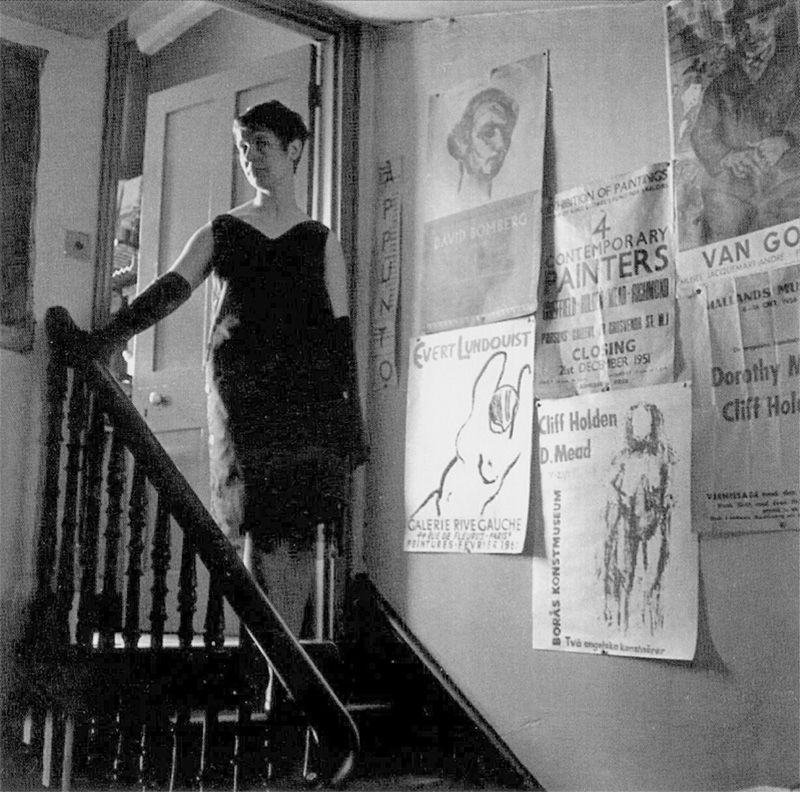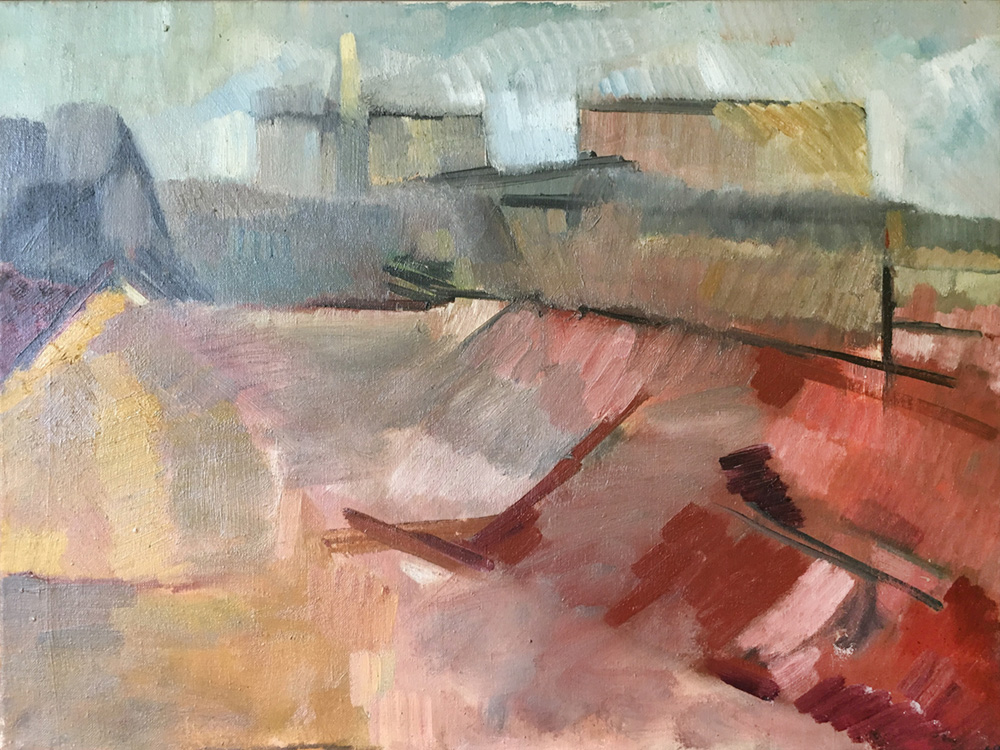According to academic research women overwhelmingly make up the majority of the workforce in museums and galleries at 70%. But this doesn’t translate to the top levels where the majority of chief executive roles are male.
Here’s an article about our first woman president from The London Group Archivist David Redfern.
Incidentally, the group is currently 55% male and 43% female.

Fifty years ago in 1972, The London Group was at rock bottom, short of members and short of money. A list at the back of a 1971 exhibition catalogue recorded only fifty-eight members. The “London Group 1971, Members’ Choice Exhibition” held in March in the Royal Academy’s Diploma Galleries made an eye-watering loss of £1,017. One month earlier, in February 1971, the Presidency had passed from Andrew Forge to Dorothy Mead (both elected to the Group in 1960), the first woman president of The London Group and so it fell to her to deal with the fallout from this disaster. The Slade School was the venue for the A.G.M. on 11th February with twenty-seven members in attendance. After a report on the success of the 1970 exhibition, also held in the Royal Academy’s Diploma Galleries, and the acceptance of the accounts, the meeting moved to the election of a new President as Dennis Creffield proposed Dorothy Mead and Anthony Green proposed Patrick George, Mead emerging victorious.
No new members were elected in 1972, whereas five had been elected in the previous year. Neither are there any minutes of an AGM for 1972. The 1973 AGM minutes state, in Mead’s President’s Report, that no exhibition was held in 1972 because a suitably large and affordable space could not be found. The Royal Academy’s Diploma Galleries were made smaller as two rooms had been taken over for the R.A. Library and were therefore not big enough for a London Group members’ show or an open submission exhibition. The Fieldbourne Gallery in St. Johns Wood was far too small, the Camden Arts Centre was already booked whilst Mead had also approached the G.L.C. and Messrs. Shaw, an Estate Agency, regarding the possibility of hiring premises in Covent Garden, but without success. Circumstances seemed to be stacking up against the new president.
An Emergency General Meeting (EGM) was called on the 21st June,1973 at the Slade. The unfortunate Dorothy Mead had been ill and spent some time in hospital. Tragically she died on the 12th June, 1975. At the 1973 EGM Neville Boden took on the role of president in her absence, proposed by Dennis Creffield (who had originally proposed Mead in 1971) and Stephen Lobb, with Geoffrey Harris as his Vice President. Mead was so unfortunate in her short tenure of office, a victim of events largely beyond her control. She had been a founder member of the David Bomberg influenced Borough Group in 1946. David Bomberg (1890-1957), a founder member of The London Group in 1913, was the influential teacher at the Borough Polytechnic where he taught from 1945 to 1951 and under whom the Borough Group emerged. Other artists elected to The London Group and also associated with the Borough circle included Frank Auerbach (1960), Anthony Hatwell (1959), Leon Kossof (1963), Leslie Marr (1961) and Miles Richmond (1981). Mead formed a close relationship with fellow student Cliff Holden, the Borough Group’s first president who was himself a member of The London Group, elected in 1961. Partner Holden said, “Dorothy sticks to her principals, but like myself and Bomberg was an outsider”. As a mature student she studied at the Slade from 1956 to 1959 with Dennis Creffield (elected to TLG in 1962 and also another member of the Borough Group) where she also met Andrew Forge. In her final year at the Slade she became the first woman president of the Young Contemporaries but was asked to leave the Slade without her qualification after refusing to take the course on perspective! In 1964 she was one of the “6 Young Painters” in an Arts Council touring exhibition along with Hockney, Riley, Crozier, Blake and Uglow. In the same year she joined the staff at Goldsmiths College where she was feted as an influential teacher, mounting a spirited alternative to Pop Art and Conceptual tendencies prevailing at that time. She also taught at Morley College and Chelsea. In another stroke of bad fortune a large number of Mead’s paintings were stolen from a secure warehouse shortly after her death, although her sister Valerie Long has custody of many others. In 2005, thirty years after her death, she was given her first solo exhibition at the Boundary Gallery in London. Her estate is represented by Waterhouse & Dodd.
David Redfern LG, 2022

